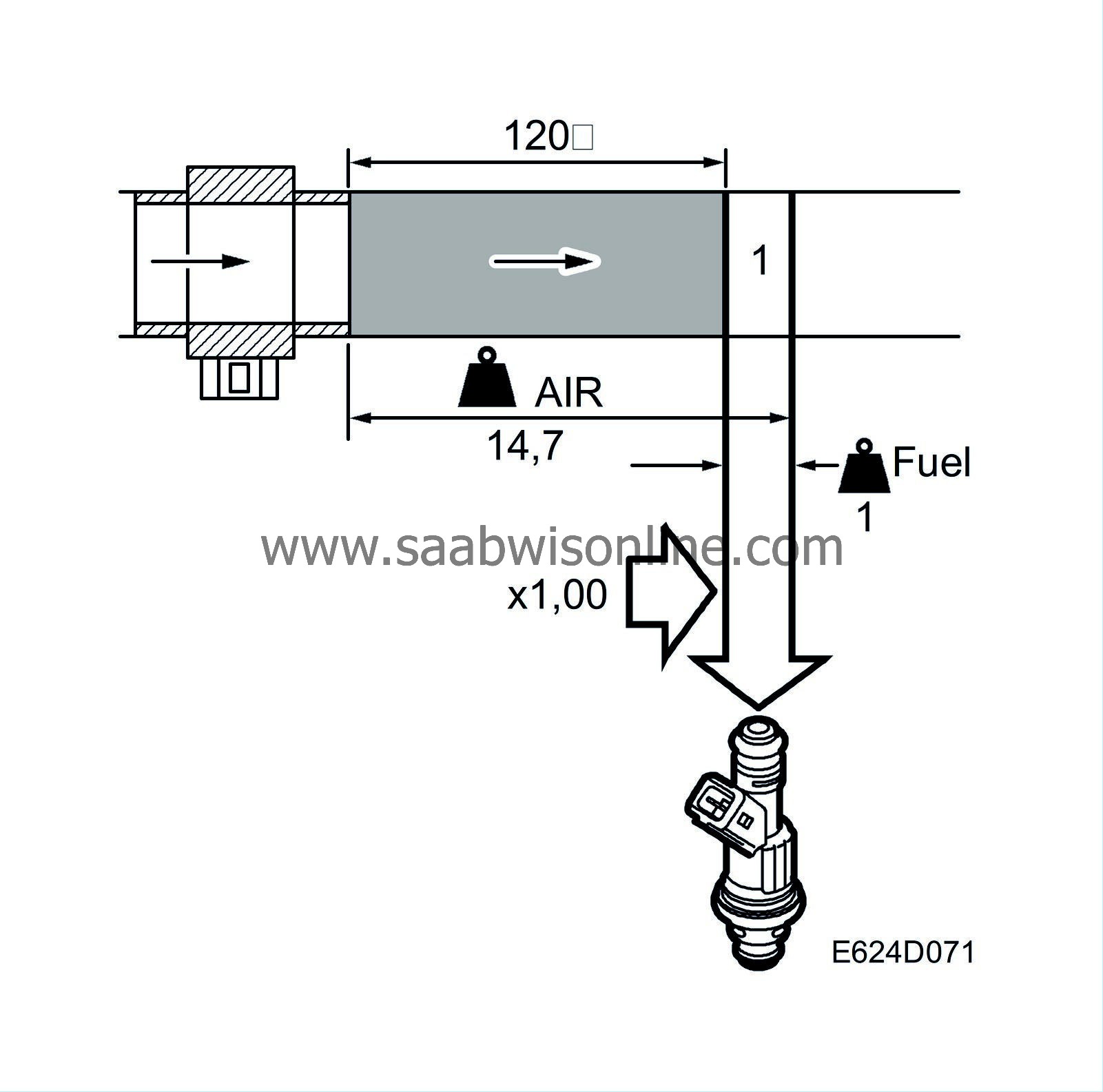Compensation
| Compensation |
The basic fuel quantity is multiplied by a correction factor that is normally 1.00. If the correction factor is changed to, for example, 1.01, then the fuel quantity will be increased by 1%. If the correction factor is changed to 0.98 instead, then the fuel quantity will be reduced by 2%. Closed loop is usually inactive if the correction factor is not 1.00, as the compensation would otherwise be corrected by the closed loop and would have no effect.
| After start |


Directly after starting the engine, the correction factor is just over 1 and subsequently drops to 1.00. How far above 1 the correction factor reaches and how long it takes to return to 1.00 depends on the engine coolant temperature. This function is called the choke on cars with carburettor engines. Closed loop starting conditions are such that fuel enrichment after starting has just dropped to 1.00 when closed loop starts.
| Load changes |
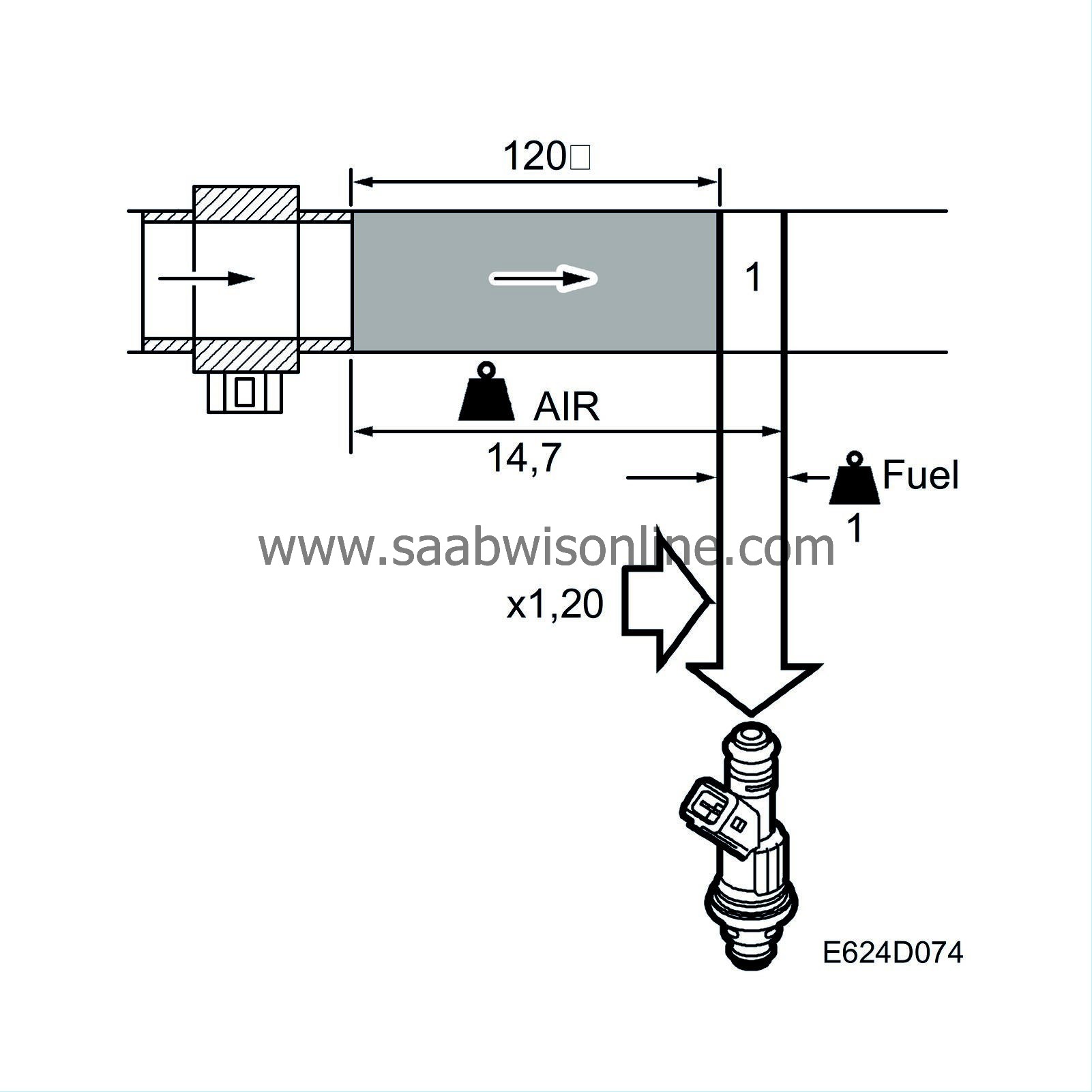
During rapid load increases, the mg air/combustion increases quickly and it is well known that a petrol engine then requires a richer mixture. This is because the pressure increase in the intake manifold results in fuel being deposited on the walls, the so-called wet film increases. The fuel quantity that is lost here must be replaced by a slightly greater injection quantity, which is achieved by increasing the correction factor by a few percentage points. For example, the correction factor can be increased from 1.00 to 1.03, which gives a 3% increase in the fuel quantity.
As soon as the load increase ceases, the correction factor will return to its original value.
During a load decrease, the function is the opposite. The wet film deposited on the walls of the intake manifold quickly vaporizes as the pressure drops. The injected quantity of fuel must then be reduced so that emissions and fuel economy do not deteriorate. This is achieved by reducing the correction factor by a few percentage points. For example, the correction factor can be reduced from 1.00 to 0.96, which gives a 4% reduction in the fuel quantity.
Closed loop is deactivated during load changes (if it was active) when the engine coolant temperature is below 70 °C. This is because closed loop would otherwise counter-compensate. When the engine coolant temperature exceeds 70 °C, closed loop will stay active during load changes, as fuel correction is then so small that counter-compensation will not affect the running of the engine. The amount with which the correction factor is changed from 1.00 during load changes depends on how fast the air mass/combustion changes and on the engine coolant temperature.
The described function corresponds to the accelerator pump or damper piston on cars with carburettor engines.
| Knocking |
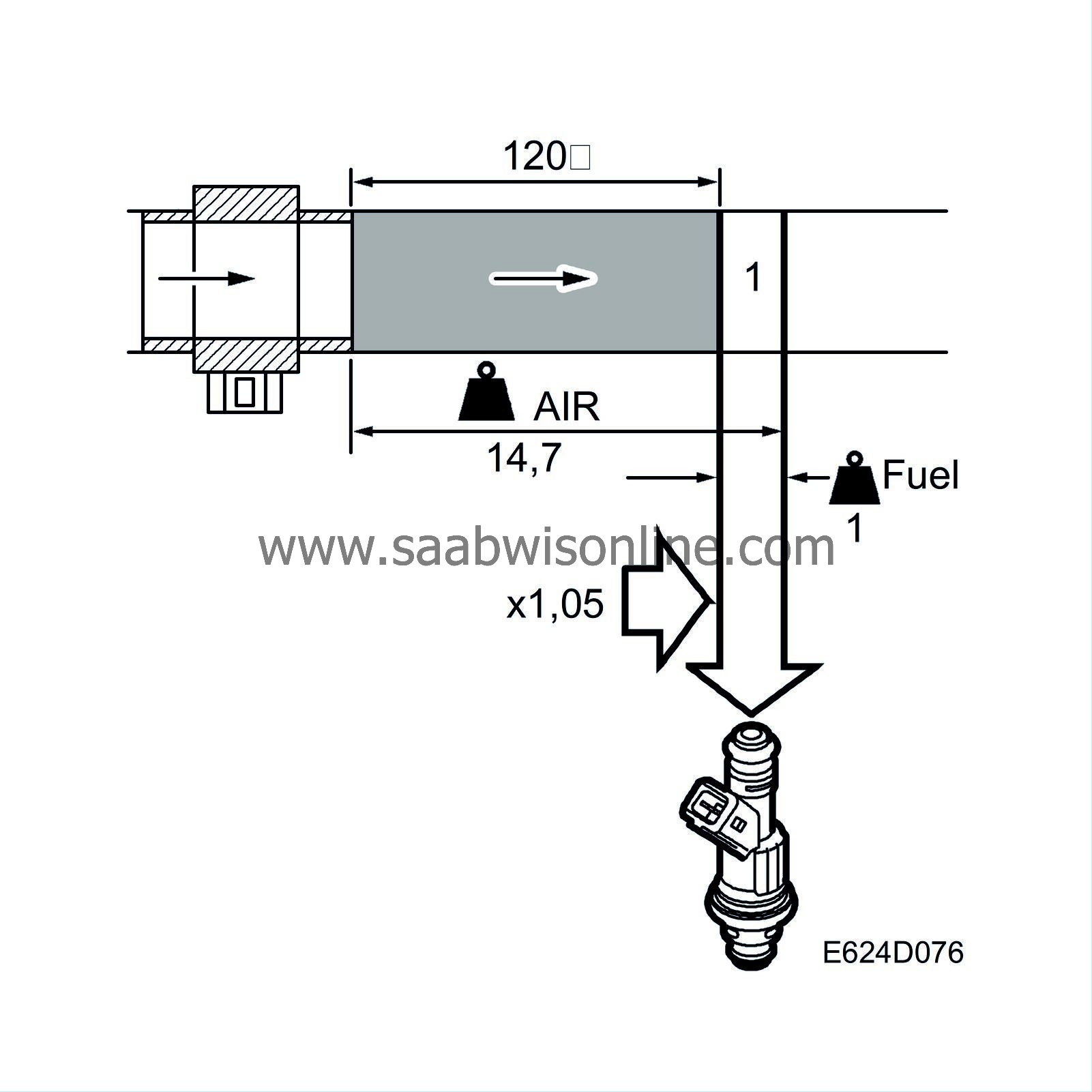

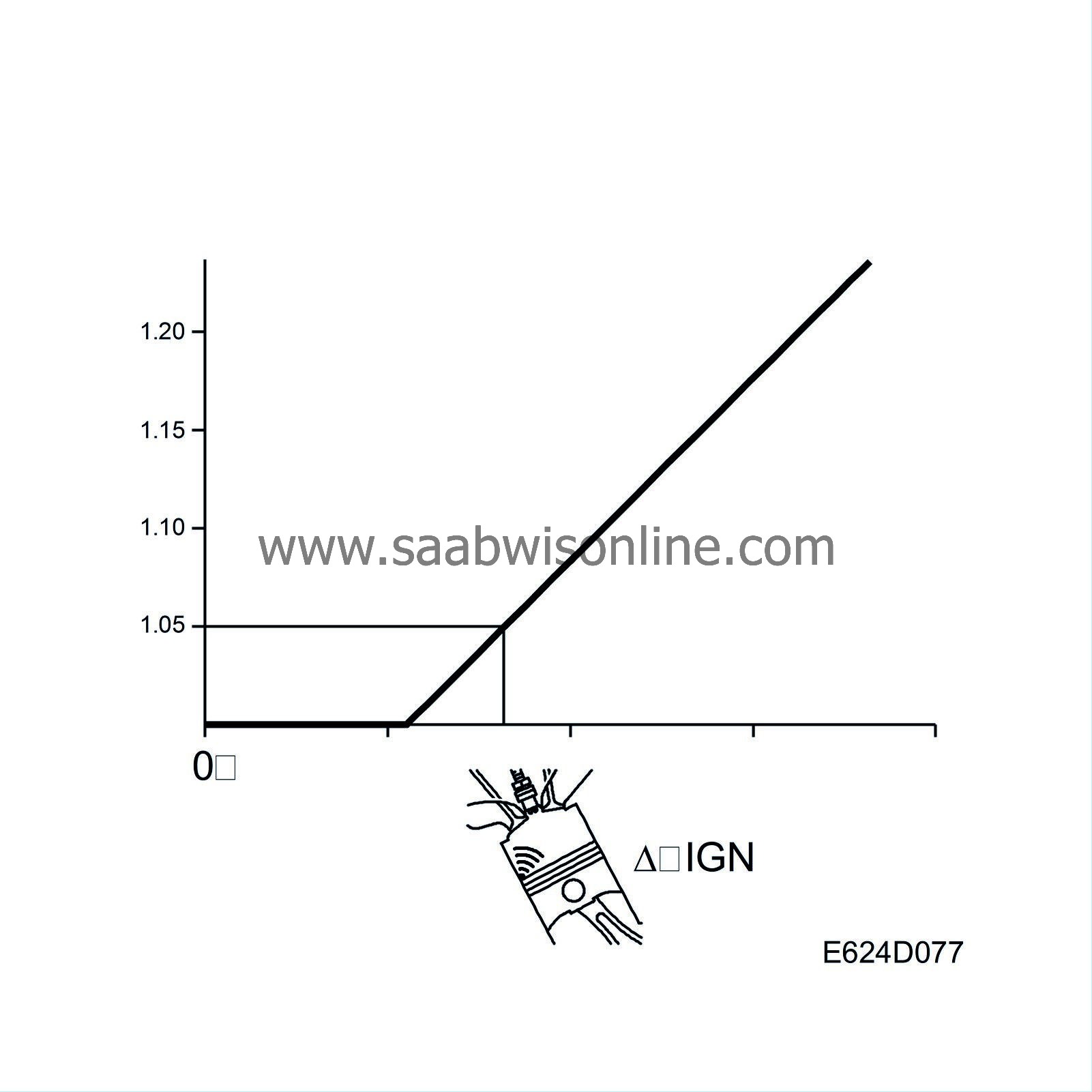
If the engine is knocking, it is corrected by retarding the ignition for the cylinder in question. If knocking persists despite the retardation, the correction factor will be increased. Closed loop will then be deactivated (if it was active) as it would otherwise counter-compensate.
| Note | ||
|
Knock control on modern engines is not a safety function but a normal function. Consequently, it is considered normal when knock control reduces engine torque in certain cases. The engine knock control increases for e.g. high intake air temperatures or high coolant temperatures. Further influencing factors are driving at high altitudes and low octane fuel. Certain engine variants require petrol with an octane rating of 98 RON in order to provide the specified engine torque/power. |
| Full-load enrichment |

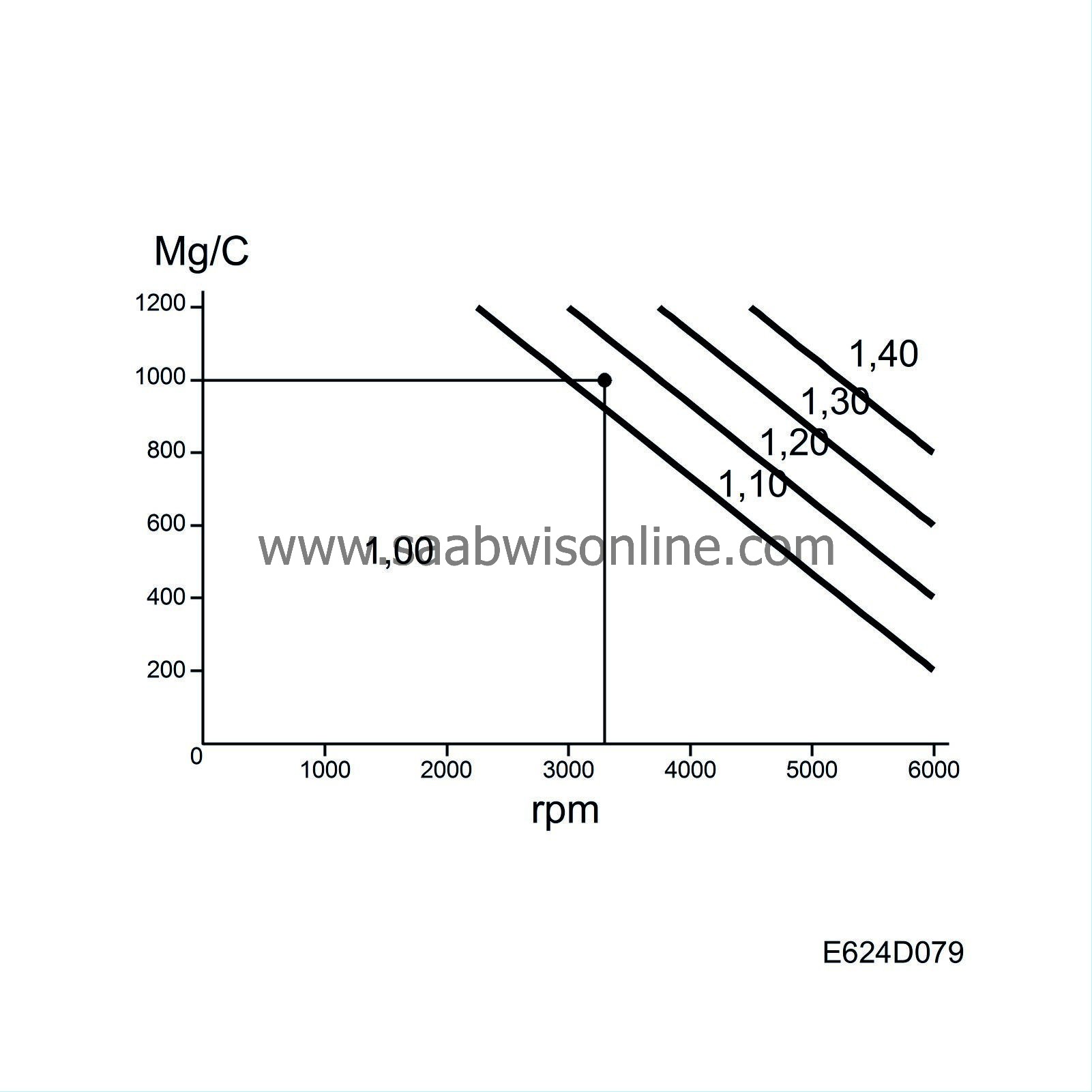
When the engine load and speed reach a certain limit, the correction factor is increased in stages as the load or speed increases further. At the same time, the closed loop system is disabled (if active) to prevent it from compensating. The aim is to ensure that all air is consumed during combustion and to keep the combustion temperature under control. The result is higher torque and a lighter thermal load.

